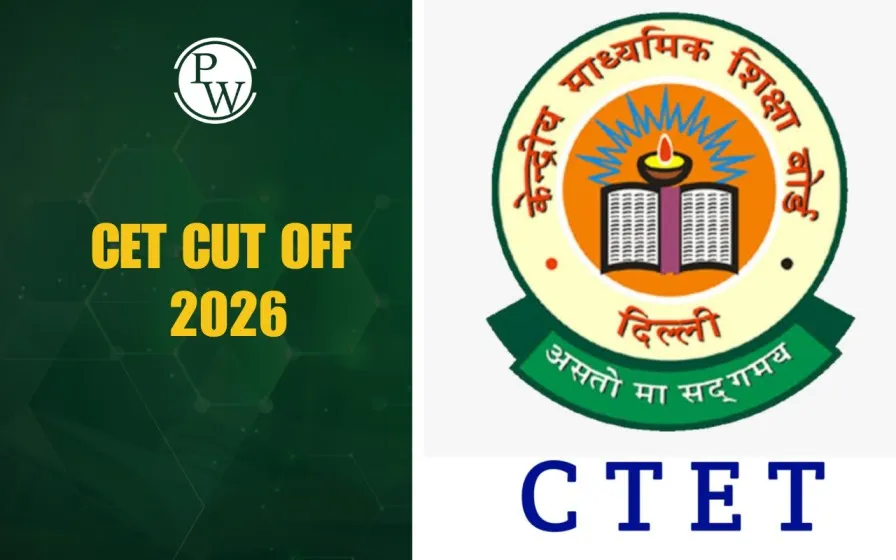

The CTET 2026 exam is scheduled for 8 February 2026. General category candidates must score 90 out of 150 marks (60%) to qualify, while OBC, SC, ST, and PwD candidates need 82 marks (55%) as per NCTE guidelines.
CTET Cut Off 2026: The Central Teacher Eligibility Test (CTET) 2026 exam date has been officially released — it will be held on 8 February 2026 for both Paper 1 and Paper 2.
The online CTET 2026 application forms are expected to open soon. While candidates are excited about registrations, there’s also a major question in everyone’s mind — “What will be the CTET cut-off marks in 2026?”
Let’s clear all your doubts about CTET qualifying marks, category-wise criteria, and NCTE guidelines for 2026.
CTET 2026 Cut Off Marks (Category-Wise Breakdown)
The CTET exam is conducted for 150 marks — both Paper 1 (for classes I–V) and Paper 2 (for classes VI–VIII).
Here’s the detailed qualifying criteria for each category:
| CTET 2026 Cut Off Marks | ||
| Category | Qualifying Percentage | Qualifying Marks (Out of 150) |
| General / Unreserved | 60% | 90 marks |
| OBC / SC / ST / PwD | 55% | 82 marks |
For General Category Candidates
If you belong to the General category, you must score a minimum of 90 marks out of 150 (60%) to be declared as CTET qualified.
This applies to both male and female candidates, and to both Paper 1 and Paper 2.
For OBC, SC, ST, and PwD Candidates
If you belong to OBC, SC, ST, or Persons with Disabilities (PwD) category, your qualifying marks are 82 out of 150 (55%).
This small relaxation helps eligible candidates qualify based on the NCTE (National Council for Teacher Education) norms.
Why Are CTET Marks Calculated in Whole Numbers Only?
Each CTET question carries 1 mark, and there is no negative marking.
That means:
-
You cannot score 82.5 marks exactly, since marks are always whole numbers.
-
Therefore, 82 marks are considered as the qualifying benchmark for reserved categories, not 82.5.
So, if you score 82 or more, and belong to a reserved category — congratulations, you’ve qualified! 🎉
CTET Certificate Validity 2026 – Lifetime Benefit
Once you qualify for CTET, you receive a CTET eligibility certificate that is now valid for a lifetime.
That means:
-
You can apply for central-level teaching jobs anytime — for example, KVS, NVS, EMRS, or any CBSE-affiliated school.
-
You don’t need to reappear for CTET again to stay eligible.
However, note that state-level TETs (like Bihar STET, UPTET, etc.) have different qualifying criteria, and CTET marks may not be directly interchangeable there.
CTET 2026 Qualifying Marks
In the table below, we have provided the details of the CTET 2026 Qualifying Marks
| CTET Qualifying Marks 2026 | |||
| Category | Qualifying % | Passing Marks (Out of 150) | Result Status |
| General | 60% | 90 | Pass |
| OBC / SC / ST / PwD | 55% | 82 | Pass |
Difference Between CTET and State TET Cut Offs
Many candidates get confused between CTET and State TET (like Bihar STET).
Here’s the distinction:
| Exam Type | Level | Qualifying Marks (General) | Remarks |
| CTET | Central (All India) | 90 / 150 (60%) | Valid for KVS, NVS, EMRS, etc. |
| Bihar STET | State-level | 75 / 150 (50%) | Used for Bihar Govt. Schools only |
So, if you’re targeting central government teaching jobs, follow the CTET qualifying marks only (90 for General, 82 for others).
CTET 2026 Preparation with TeachingWala
As shared in the video by Himanshu Gupta, aspirants can boost their CTET 2026 preparation using both YouTube classes and premium courses available on the Physics Wallah (PW) App.
-
Paper 1 (Primary Level): Complete coverage of Child Pedagogy, EVS, Maths, and Language Papers.
-
Paper 2 (Upper Primary): Detailed preparation for Maths & Science or Social Studies depending on your stream.
-
Free daily live classes on YouTube at 12 PM, and premium structured batches for deep revision.
So, whether you’re targeting Paper 1 or Paper 2, consistent revision and mock test practice are key to scoring above the CTET cut-off marks 2026.
